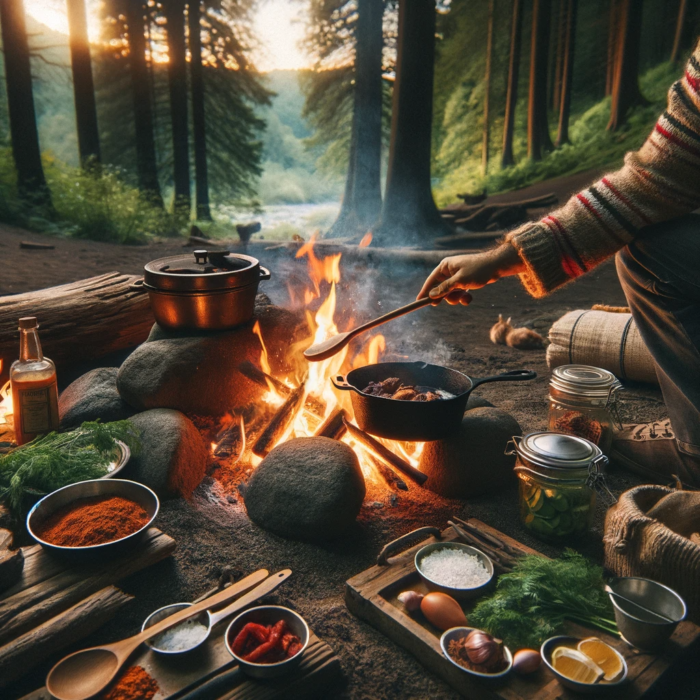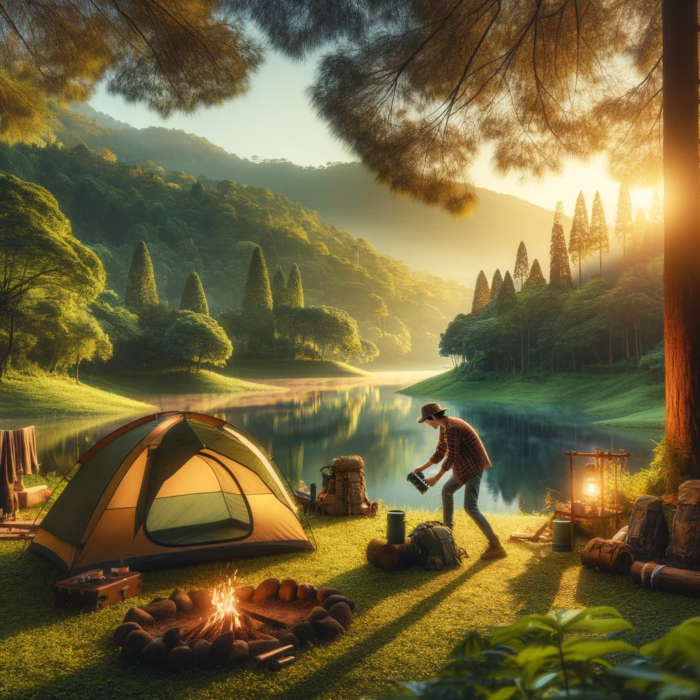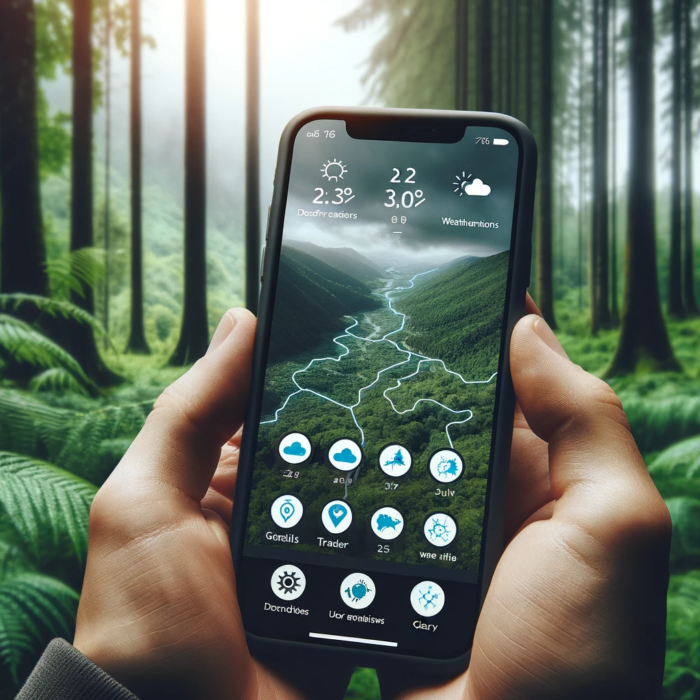Table of Contents
Introduction
Welcome, fellow adventurers! As we look forward to the camping season of 2024, it’s time to gear up with the latest tips and tricks for an unforgettable outdoor experience. Whether you’re a seasoned camper or just starting, this guide is packed with essential advice to make your next camping trip a resounding success.

1. Choosing the Right Gear
One of the most frequently asked questions by campers is, “What are the must-have camping essentials for 2024?” The key to a great camping experience starts with the right gear. In 2024, technology and sustainability are at the forefront. Consider eco-friendly gear made from recycled materials. For solo car campers, a reliable GPS and a well-stocked first-aid kit are indispensable. And don’t forget about comfort – a high-quality sleeping bag and a suitable tent for the season are crucial.
When it comes to gear, think lightweight, durable, and multipurpose. For tents, look for weather-resistant materials and easy setup mechanisms. Sleeping bags should be chosen based on the expected temperature range – a three-season bag is versatile for most conditions. Don’t forget a comfortable, insulated sleeping pad, which can make a huge difference in your sleep quality. For backpacking trips, consider the weight and packability of your gear. Remember, the right gear doesn’t just make camping more enjoyable; it can also be crucial for your safety.
Five years in, and my ‘Nemo 2‘ three-season tent is still performing wonderfully. It’s been a reliable companion for most seasons, though I’d recommend something else for winter adventures. Best part? It’s been a fantastic investment at $250, showcasing remarkable durability over the years.
2. Mastering the Art of Layering
A common query is, “How should I dress for different weather conditions while camping?” The answer lies in mastering the art of layering. Start with a moisture-wicking base layer, add an insulating mid-layer, and top it off with a waterproof outer layer. This approach will keep you prepared for varying weather conditions, from unexpected downpours to chilly evenings.
Layering allows you to easily adjust to changing temperatures and activity levels. Your base layer should wick moisture away from your body, keeping you dry. Merino wool and synthetic fabrics are excellent choices. The mid-layer, your main insulating layer, should retain body heat. Fleece or a lightweight down jacket works well. The outer layer protects you from wind and rain. Look for breathable yet waterproof materials like Gore-Tex. Don’t forget accessories like hats, gloves, and wool socks to keep extremities warm.
3. Campsite Setup: Finding the Perfect Spot
Many campers ask, “What should I look for when setting up my campsite?” Choosing the right spot is crucial. Look for level ground, sheltered from the wind, and away from low-lying areas that could flood. Ensure your tent is positioned with the entrance facing away from prevailing winds and use natural features like trees or rocks for added protection.
Your campsite location can significantly impact your comfort and safety. Avoid areas under dead or weak branches. Stay clear of valleys and paths that could turn into waterways if it rains. Look for natural windbreaks and consider the direction of the morning sun for warmth. Familiarize yourself with the campsite rules and boundaries, and always maintain a safe distance from wildlife. A well-chosen campsite not only offers protection from the elements but can also enhance your overall camping experience with beautiful views and tranquility.
4. Campfire Cooking and Food Safety

A frequent concern is, “How can I safely and efficiently cook while camping?” Campfire cooking is not just about roasting marshmallows. Plan your meals ahead and consider portable stoves or grills for more elaborate cooking. Remember food safety – keep perishables in a cool box and always cook meat thoroughly. And why not try some campfire classics like foil-wrapped veggies or skillet s’mores?
Campfire cooking is a quintessential part of the camping experience. Start with a safe fire pit and keep water or a fire extinguisher nearby. Pre-plan your meals and prep as much as you can at home. Use cast iron cookware for even heat distribution. When it comes to food safety, keep raw and cooked foods separate, and ensure meats are cooked to the proper temperature. Consider packable foods that require minimal preparation. Lastly, always clean up thoroughly after meals to avoid attracting wildlife.
5. Wildlife Encounters and Safety
One of the top questions is, “How should I behave around wildlife while camping?” Encountering wildlife is part of the camping charm, but it’s essential to respect their space. Store food securely to avoid attracting animals, and never feed wildlife. If you encounter larger animals, keep your distance and avoid sudden movements.

Respecting wildlife is a crucial part of camping. If you see wildlife, observe from a distance and never approach or feed them. Store your food and scented items securely, ideally in bear-proof containers or suspended between trees. Make noise while hiking to alert animals of your presence, reducing the chance of a surprise encounter. Educate yourself about the wildlife in the area before your trip and know what to do in case of an encounter, especially with potentially dangerous animals.
6. Sustainable Camping Practices
As more campers ask, “How can I minimize my impact on the environment while camping?” it’s important to highlight sustainable practices. Stick to established trails, use biodegradable products, and practice Leave No Trace principles. Minimize waste by packing reusable items and disposing of garbage responsibly.
Sustainable camping means leaving no trace of your stay. Use established campsites and trails to avoid damaging the environment. Bring reusable water bottles and containers to minimize waste. Dispose of waste properly – pack out what you pack in. If you need to wash dishes or yourself, do so at least 200 feet from water sources using biodegradable soap. Use solar-powered gear where possible, and be mindful of your resource consumption. By camping sustainably, you help preserve the natural beauty for future visitors.
7. Tech in Nature: A Double-Edged Sword
A common dilemma is, “Should I use technology while camping?” While it’s great to disconnect, some tech can enhance your camping experience. Use GPS for navigation, solar chargers for sustainability, and apps for identifying flora and fauna. But remember, the essence of camping is to enjoy nature, so balance your tech usage.
While technology can enhance safety and convenience, it’s important to find a balance. Use tech for navigation, emergency communication, and educational purposes like star maps or plant identification apps. But also take time to disconnect and immerse yourself in the natural world. The reduced screen time can be incredibly refreshing and offers an opportunity to connect more deeply with your surroundings and fellow campers.

Check out blog on technology and the outdoors for more info.
Conclusion
As we gear up for camping in 2024, let’s embrace the advancements while holding onto the timeless joys of outdoor life. Whether it’s through selecting the right gear, respecting wildlife, or balancing technology with nature, each step of your journey should be a harmonious blend of adventure and responsibility. So pack your bags, hit the trails, and make unforgettable memories under the stars!
Thank you for visiting us!!